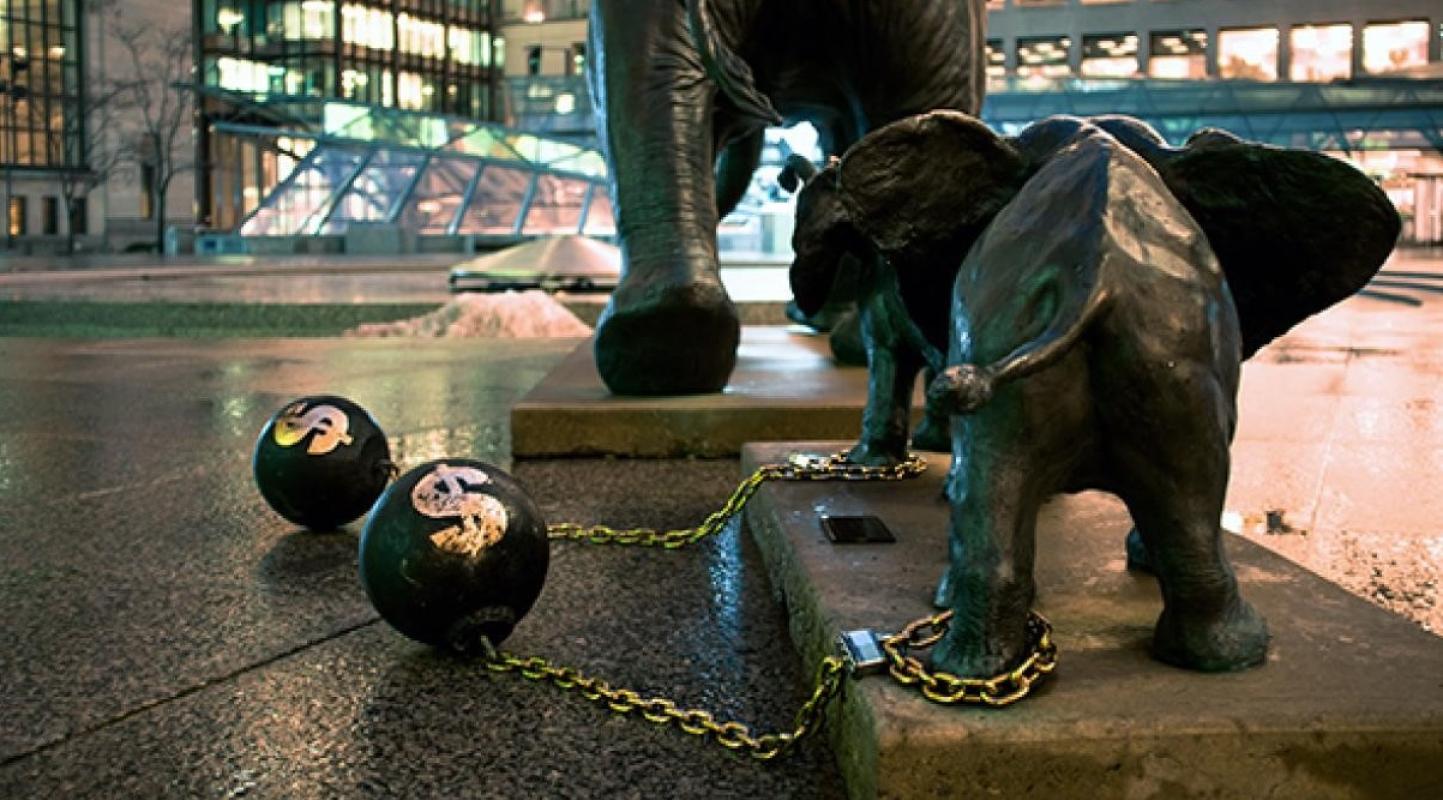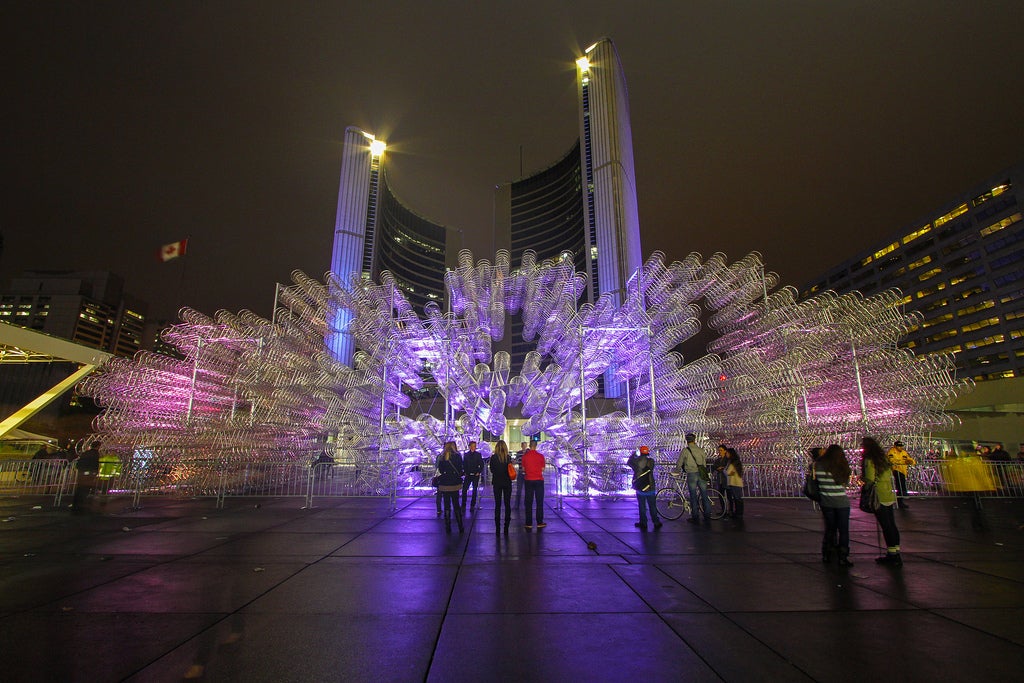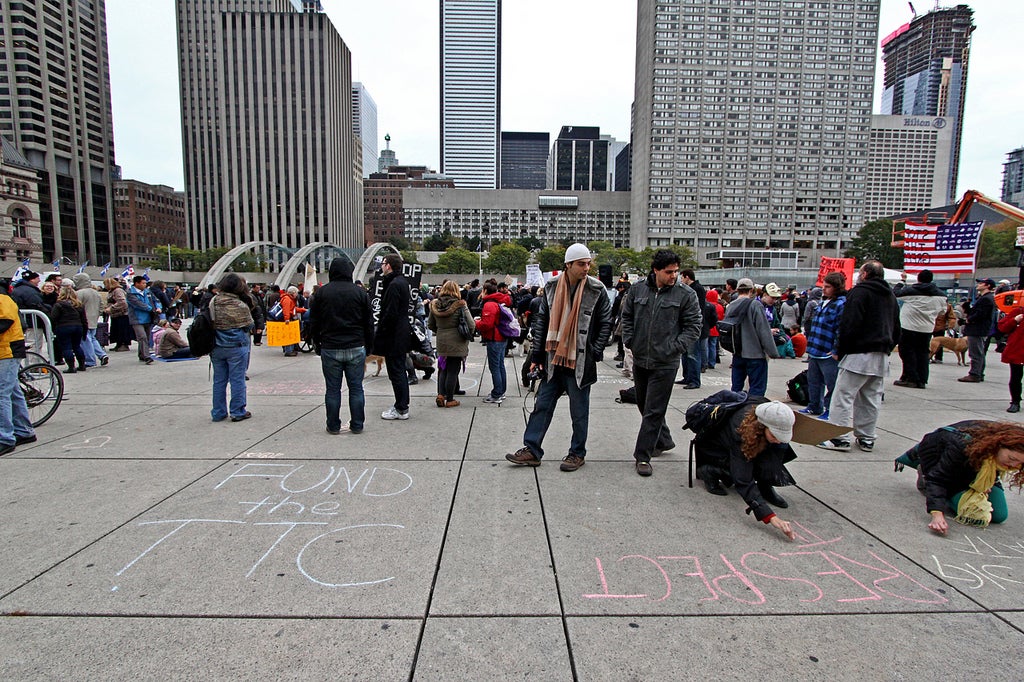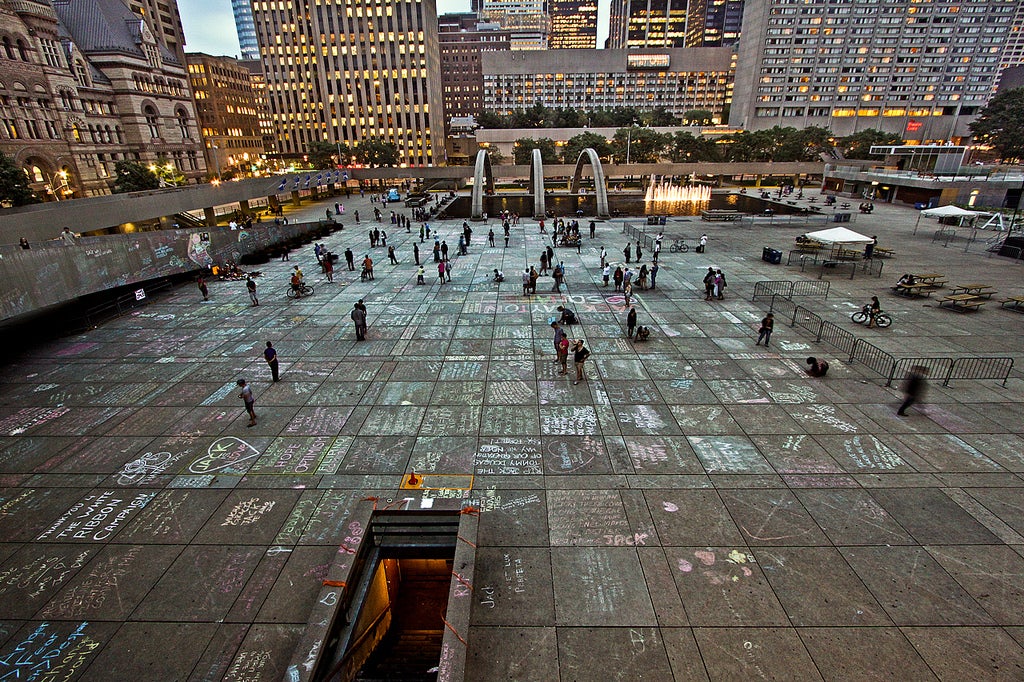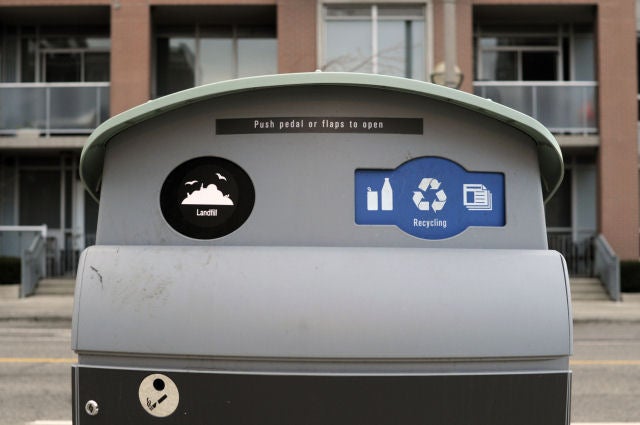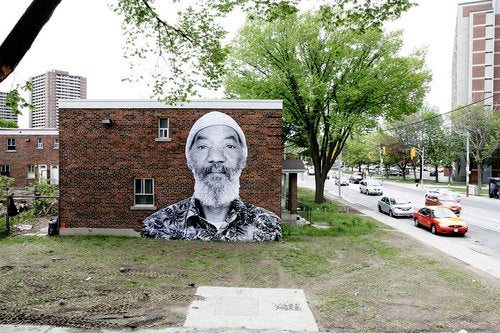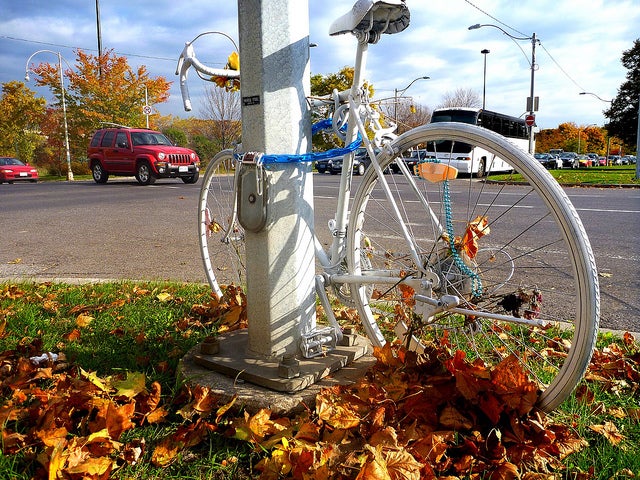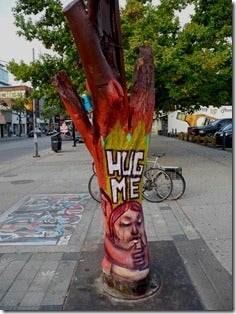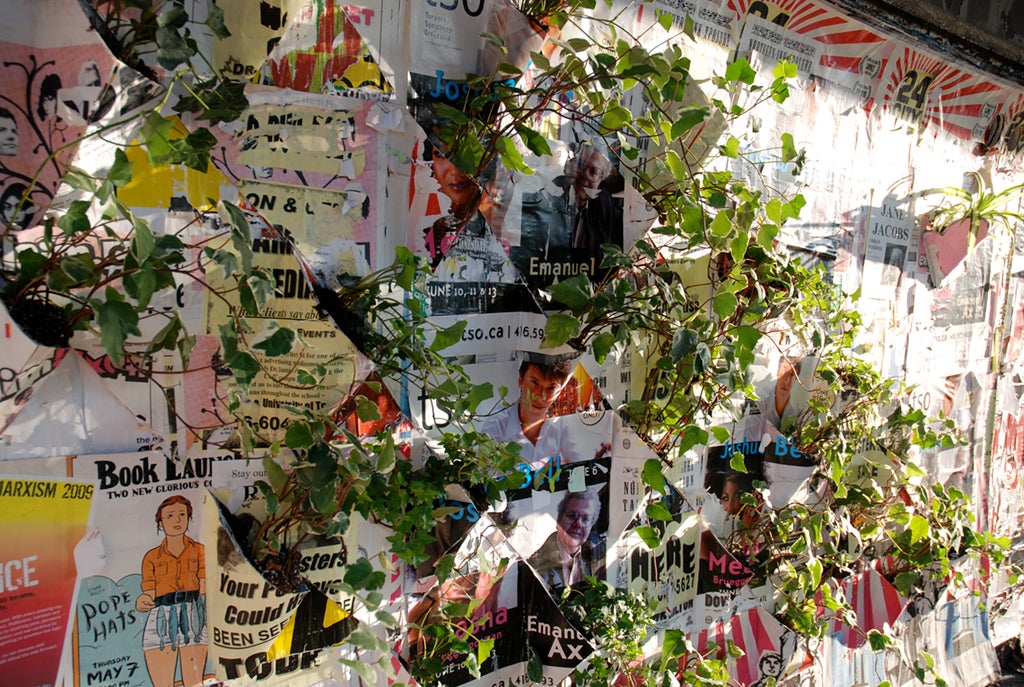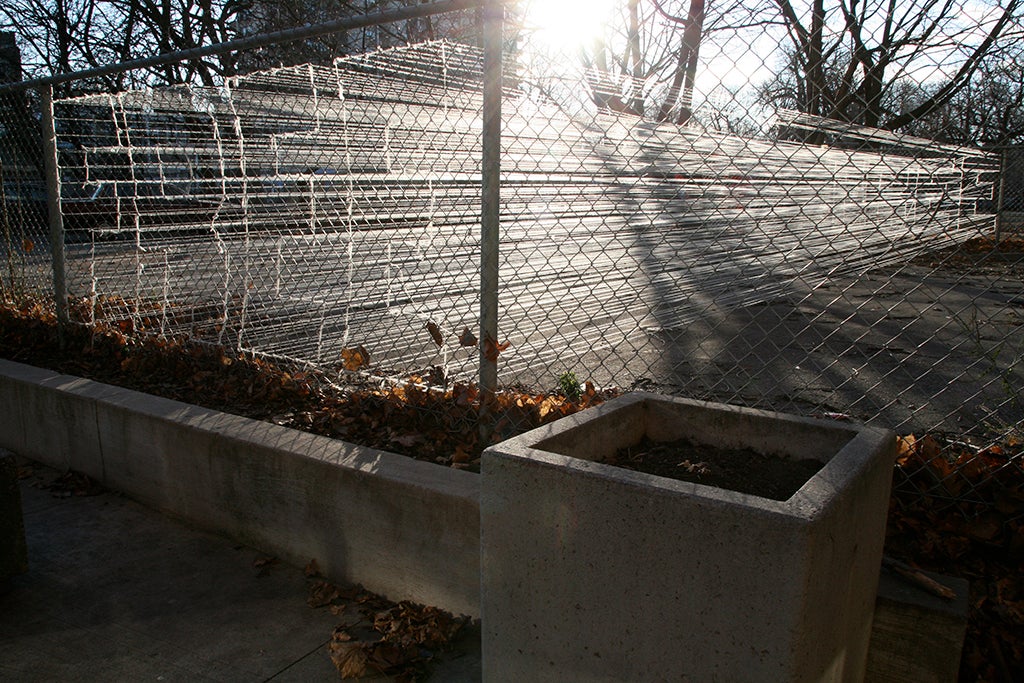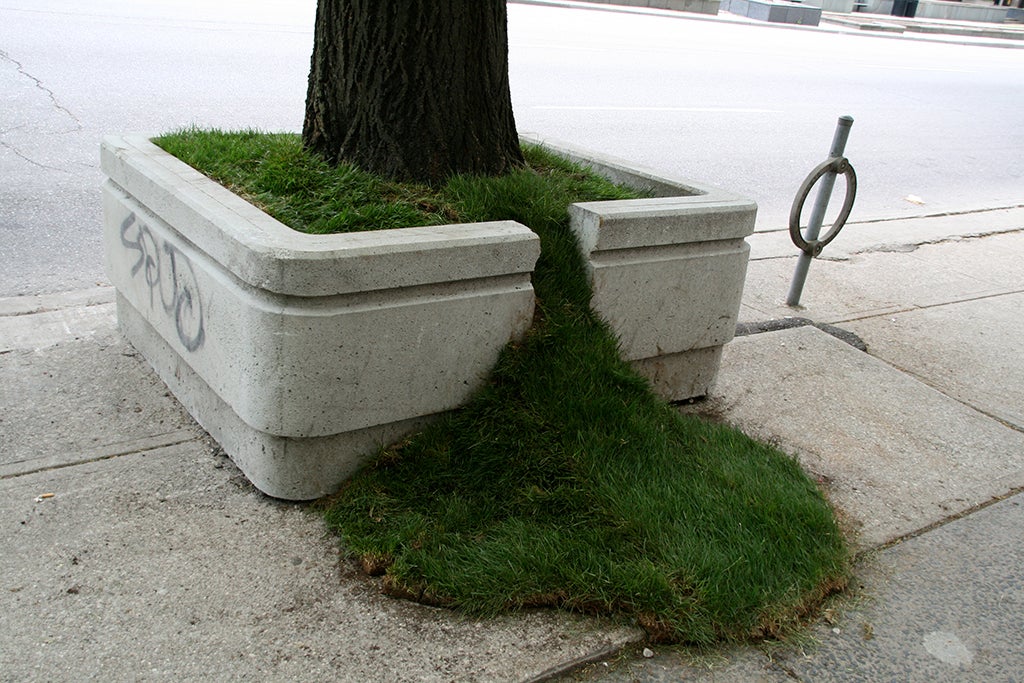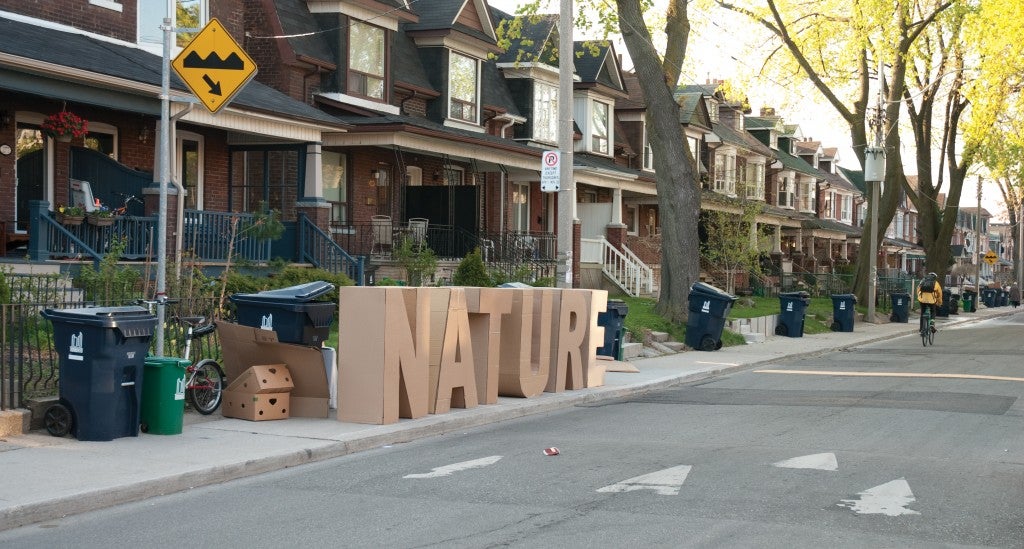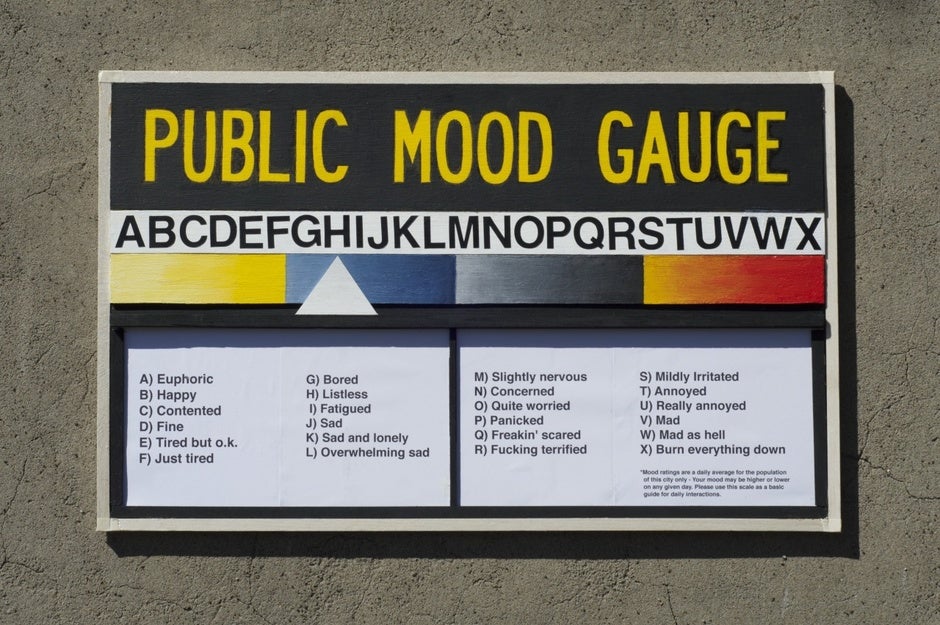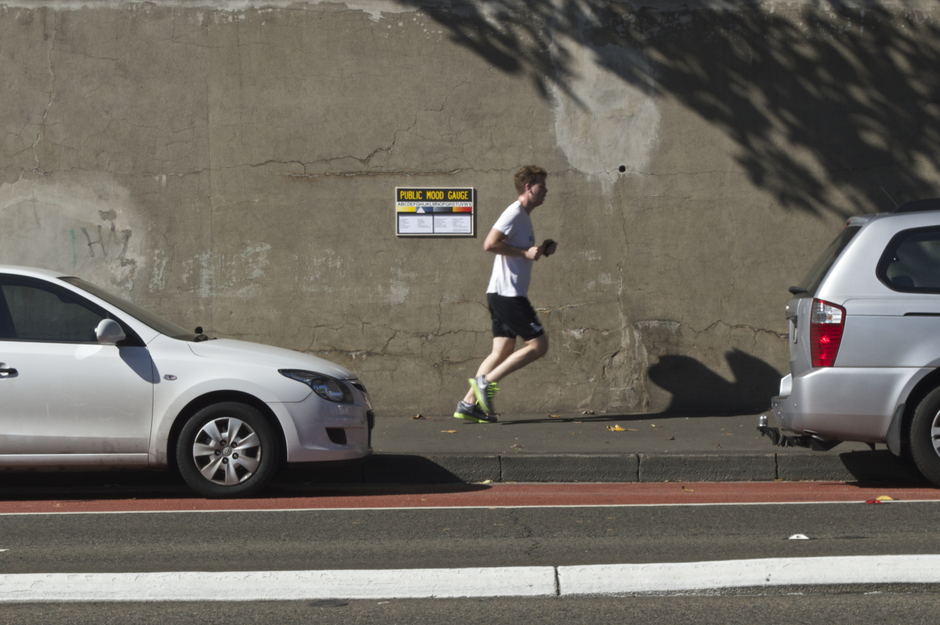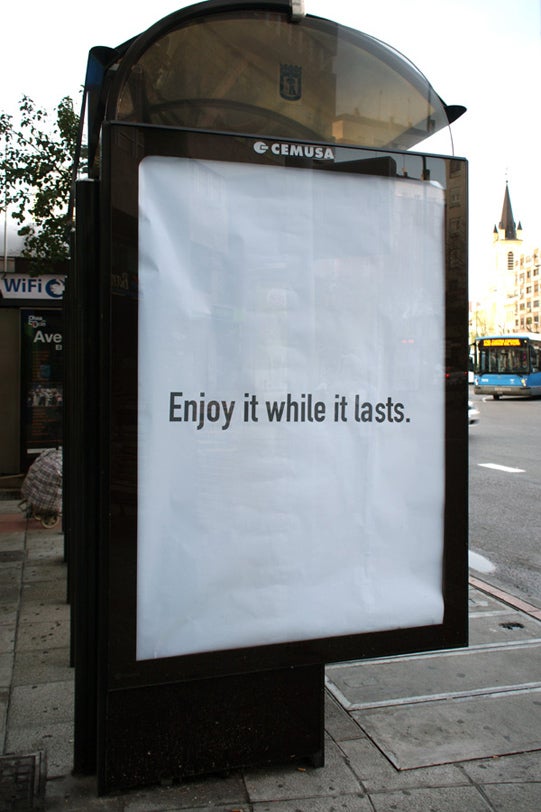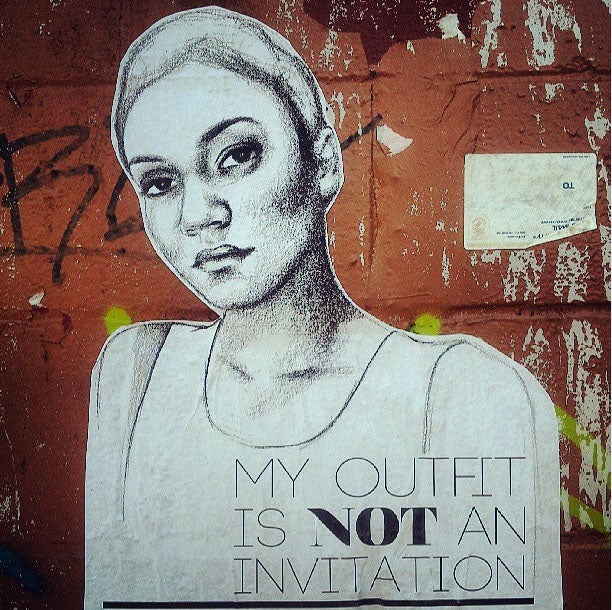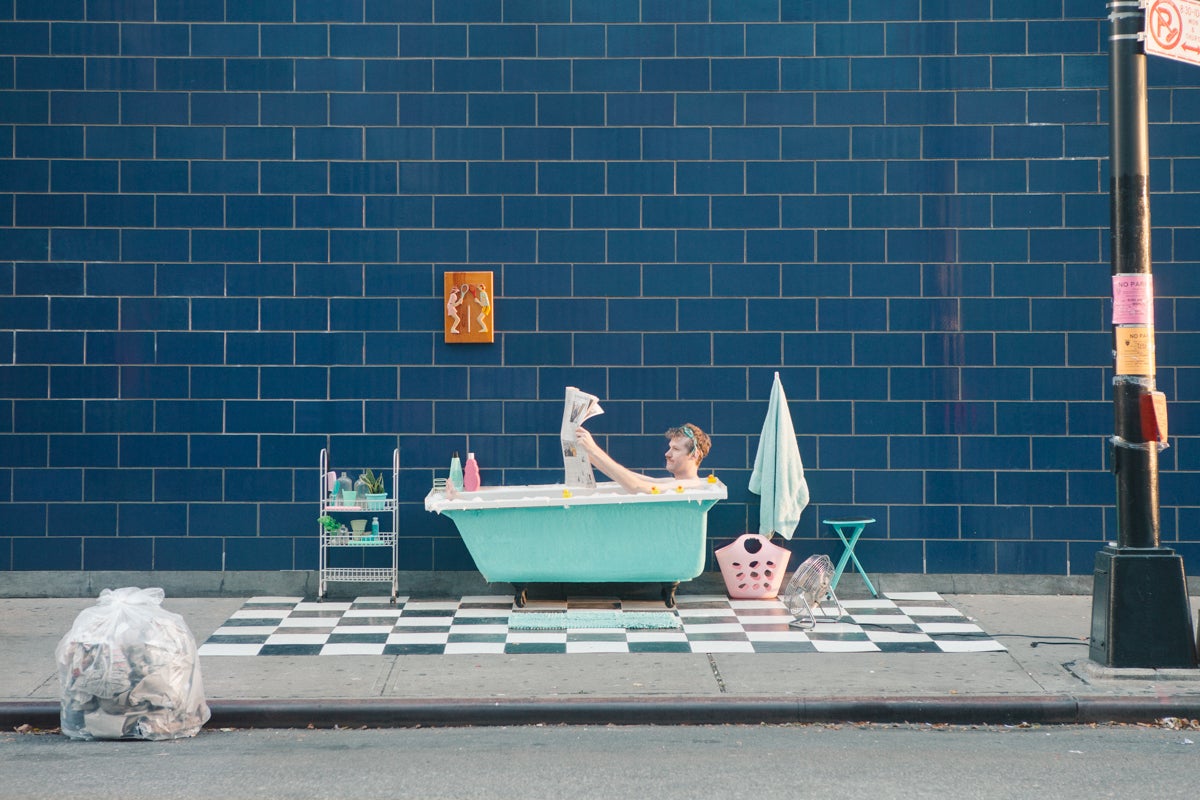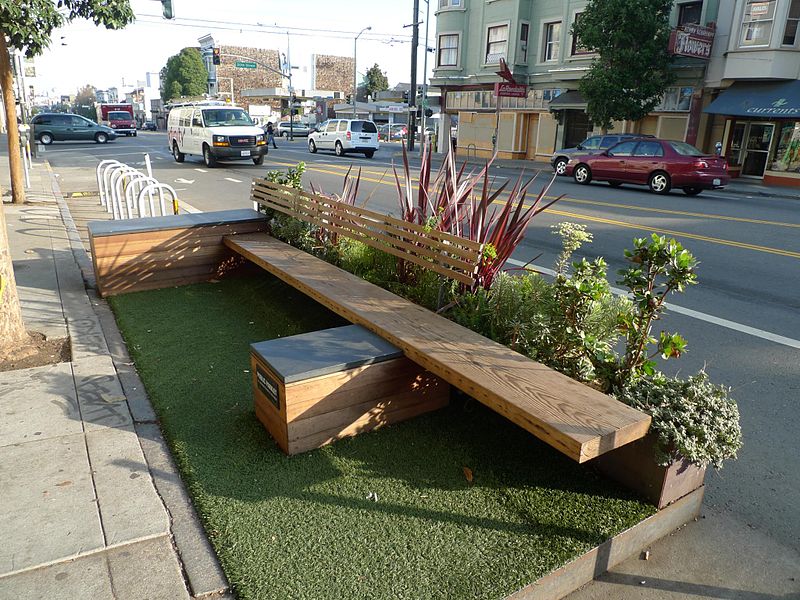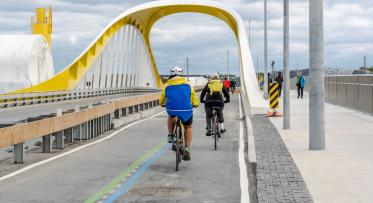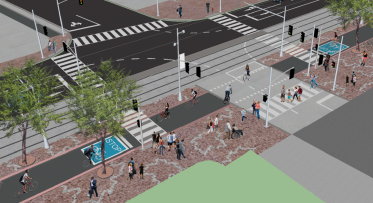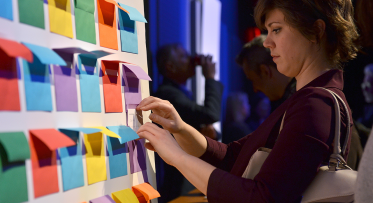Street Art and the Politics of Public Space
Late last year in Toronto’s Financial District, these balls and chains were found “added” to Derrick Stephan Hudson's well-known bronze sculpture Tembo, Mother of Elephants, raising eyebrows and prompting a public discussion about its intended meaning. (From BlogTO.)
In this three-part blog post, we’ve asked "What does it take to make a great street?" and explored a number of factors that contribute to creating a lively, animated street life. Part one explores “The Role of Urban Design,” part two explores “Breathing Life Into Our Streets,” and this third and final part explores “Street Art and the Politics of Public Space.”
POSTED: FEBRUARY 25, 2015 I COMPLETE STREETS, DESIGN
By Christopher McKinnon
In the first and second part of this three-part series, we raised a notion that is worth exploring in greater detail: Our streets are fundamentally a democratic space. We come together in streets and public places. We linger in these spaces and they give us an opportunity to share observations and perspectives – streets give us the opportunity to participate in the life of our city and for the life of the city to be a part of our lives.
Cities are once again thriving in their downtown cores and one of the reasons surely has to do with the public spaces that define them. Toronto has a handful of big public squares – Nathan Phillips Square, Pecaut Square and Yonge-Dundas Square come to mind; but also Mel Lastman Square in North York – and these are important sites of civic engagement, celebration, protest and demonstration. Great public spaces exist all over the world (see Project for Public Spaces’ lists of great public squares in North America and around the world) and today, with urban populations growing and more people choosing to live in cities, our parks and public spaces are more important than ever.
Nathan Phillips Square is a good example of a dynamic public square. Wrapping around Toronto's city hall, it is the site of political demonstrations and rallies, public memorials, and arts and cultural celebrations. In many ways, it operates as a kind of blank slate for our most public discussions, conversations, actions and even emotions. (Three images by lewolf011 on Flickr)
Large public spaces help to knit together the social fabric of a city, but so do the smaller spaces – the parks, the sidewalks, the nooks and crannies of the city that we visit or pass through daily – even if it isn't always so readily apparent. All around us, there are civic conversations unfolding. Some of the most interesting examples happen in the places we least expect, often without permission or official approval from anyone.
From left to right, top to bottom: A Toronto trash can is “vandalized” by an anonymous artist. Dan Bergeron’s portraits of Regent Park residents pasted on buildings slated for demolition as part of the area’s revitalization. Toronto’s ghost bikes help us remember cyclists who’ve been killed at dangerous intersections. Queen Street’s famous “hug me” tree. (Click on the links to view image sources.)
From the famous (or infamous, depending on your perspective) "Hug Me" tree on Queen Street West, to giant wheat paste portraits of Regent Park residents, to a simple sticker on a trash can, to painted white "ghost bikes" that memorialize the tragic deaths of cyclists in our streets – a walk through Toronto reveals plenty about the kinds of civic and political conversations that we're having (or want to have). These simple interventions act like social acupuncture. They prompt, prod, poke and energize our conversations about what it's like to live in our city – and perhaps more importantly, what we would like it to be like.
There is a history of artists and community members using art projects or “urban interventions,” often political or activist in nature, to reclaim the street and reshape the life that inhabits it. Much of Toronto-based artist Sean Martindale’s work runs in this vein – his clever, artistic and political “hacks” in public spaces are inspiring.
“Interventions” in public spaces by interdisciplinary artist Sean Martindale. Learn more about his work on his website.
In the photos above, you see some examples of the kind of artwork that Martindale creates. On the top left, he has cut and folded an accumulation of street posters (sometimes illegally posted by promoters) to create makeshift pots for plants in an unexpected place. On the top right is an installation where he wove a giant F-R-E-E out of reclaimed string in a fenced off and inaccessible parking lot. On the lower left, some of Toronto’s crumbling street infrastructure gets whimsically reimagined with grass spilling down onto the sidewalk. And, finally, there’s this temporary art installation for garbage day in a Toronto neighbourhood. To get the full effect, you can watch a timelapse video of the project here.
Thinking about Martindale’s work reminds us that our public spaces need to be places for dialogue. Our streets are a place for conversations. They are places where we share moments with one another. And, most of all, streets are places for people. That’s something we should all keep in our minds while we work to build and improve our city’s streets and public spaces.
You’ll hear lots more discussion of public space and what it means, in this panel discussion we organized last fall at the Toronto Public Library. In it, writers, artists and designers discuss how they think about public space, and why it’s so important. The participants include Shawn Micallef, Sean Martindale, Helena Grdadolnik and Marc Ryan – all of whom are professionally engaged in thinking about public space in different ways. See the YouTube video embedded below if you'd like to watch the full one-hour discussion:
Many projects may seem simple, but the effect of something unexpected can jolt you out of daily life and create profound effects. Sydney, Australia-based artist Michael Pederson’s “street signs” do this.
Likewise, a simple work of spraypaint and stencil work can surprise us in the right moment.
In a project called Madrid Advertising Takeover, ads on bus shelters were replaced with the thoughts of more than 100 thinkers, sociologist, teachers, lawyers, and artists. This is curator/designer Jason Eppink's contribution. (Check out more of Jason's work on his website.)
More overtly confrontational is this series of wheat paste murals called “Stop Telling Women to Smile,” wherein artist Tatyana Fazlalizadeh challenges gender-based street harassment.
And then more playful but no less "disruptive" to the normal day-to-day of passers-by is this series called “Sets in the Street” by photographer Jason Bettman – which transformed sidewalks into rooms. Once the photo shoot was over, Bettman left the sets in place and curious passers-by could make use of them.
A Little Park Goes a Long Way
Another interesting type of project to recently capture our fascination is the parklet. The City of San Francisco was the first to formalize the concept for these small, reclaimed public spaces back in 2010. Parklets typically act as enhancements to the streetscape, incorporating things like new seating, bike parking, planters or public art. Since the early 2010s, the idea has taken the world by storm – having since appeared in Los Angeles, Chicago, Seattle, Dallas, Oakland, Pheonix, Philadelphia, San Jose, San Diego, Dublin, Paris, São Paulo, Vancouver, Montreal (you get the picture) – and yes, even here in Toronto. Church Street saw its own parklet experiment in the summer of 2013, as did John Street in the Entertainment District in the summer of 2014.
The parklet has its origins in San Francisco – and this example, Freewheel Parklet on Valencia Street, shows off many of the common features: seating, bike parking, and planters. Another common feature of parklets is that they often take over parking spaces, to expand sidewalk space and beautify sidewalks. (Image by Mark Hogan via Wikimedia Commons)
In dense urban areas that are starved for public space, parklets are economical, fun and often very beautiful – and research is showing that they are well worth the modest investment. Studies like this recent one from Chicago are showing that parklets are good for local businesses in addition to being a pleasant addition for those walking or cycling by.
Other examples that helpfully illustrate how we are “reclaiming” public space can help us rethink and reshape how we think about public space. On a much larger scale, for example, residents of São Paulo, Brazil have reclaimed an elevated freeway and now use it as a kind of DIY park and community gathering place. They host dance parties and barbecues, they roll out sod and put out chairs. Street artists have covered the asphalt in chalk artwork. In an act of creative rebellion, groups of citizens have taken this piece of out-dated infrastructure back and turned it into a useful, vibrant public space. In Ottawa, a group of design and cultural professionals transformed an underpass into an inviting public space with pink shag carpeting and live music. Whether the result is an experience that is moving or amusing or strictly aesthetic, in every case these types of interventions in public space invite the question “What should public space be?” As planners and designers of public spaces, we find that examining the results of such interventions is extraordinarily useful as we seek to answer that question.
We hope you do too.
...
What do you think makes a great public space? Share your thoughts, comments and feedback.
Follow us on Facebook and Twitter – and join the conversation about waterfront revitalization using the #TOtheWaterfront hashtag.

